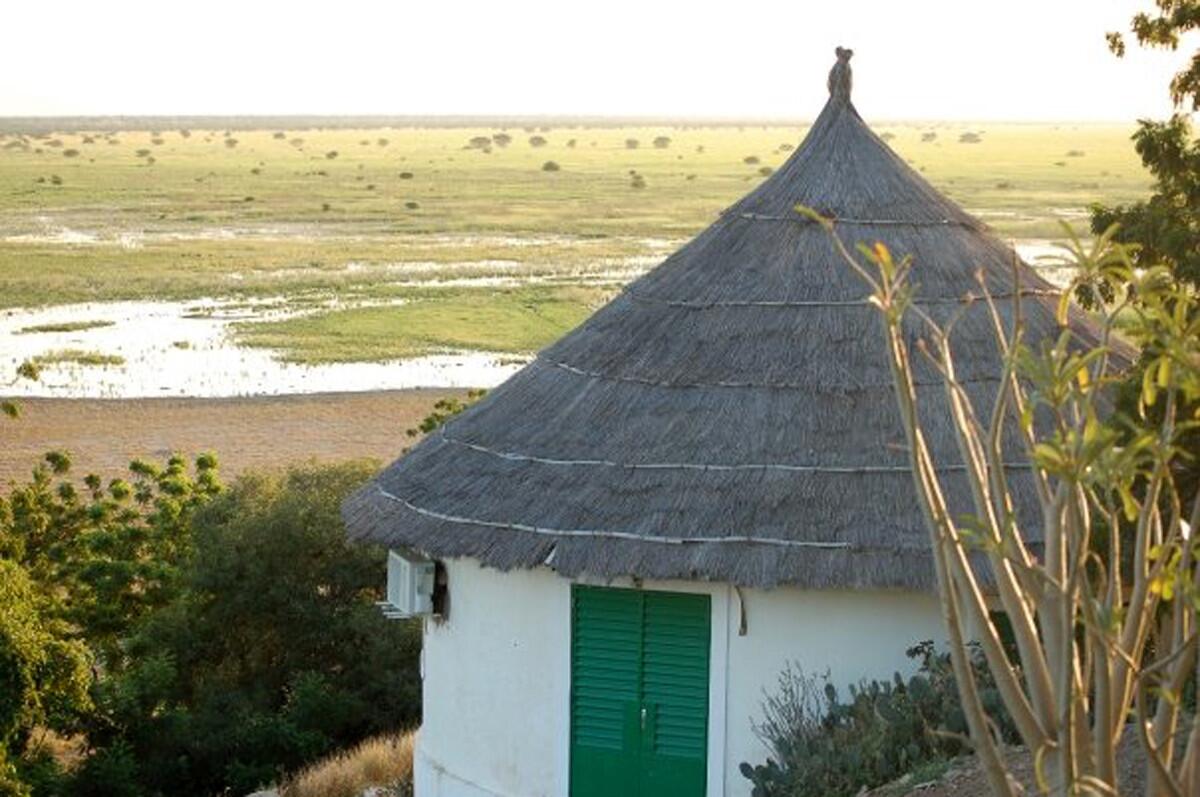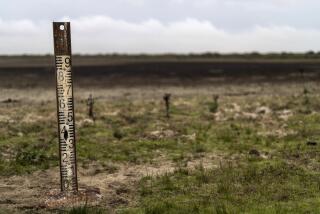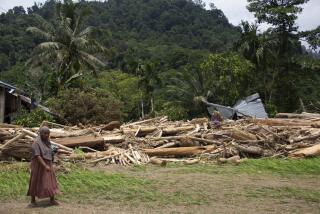Preserving Cameroon’s treasures

- Share via
Cameroon, located on the west coast of Africa between Nigeria and Equatorial Guinea, is a nation of unparalleled beauty and biological diversity. Mt. Cameroon, in the west, is one of Africa’s largest volcanoes, reaching 13,255 feet; in the north of the country, savanna and semi-desert extend to Lake Chad; and in the south, lush tropical rain forests form the northwestern boundary of the Congo basin. Similar in size to California, Cameroon is one of the most biodiverse countries in Africa, home to more than 900 species of birds and 300 species of mammals (including more than 29 primate species). Many of the country’s rare plant and animal species are found nowhere else in Africa.
But Cameroon’s amazing biodiversity is under serious threat.
Across Africa, a new scramble for natural resources is underway, and Cameroon is in its cross hairs. The exploitation of its timber, oil, natural gas and rain forests is intensifying, and that means new roads and rail lines are opening up areas that were once difficult to traverse and putting increasing pressure on animal and plant populations.
This is a critical time for the people of Cameroon. Yes, there are new and important opportunities for economic growth and an improved standard of living, but that must be balanced against the importance of preserving the country’s natural resources for future generations.
Wildlife trafficking in the region has gotten a lot of attention, and it is certainly a huge problem, but the environmental threat to Cameroon extends far beyond. The loss of important seed dispersers, such as the forest elephants and primates that feed on fruit, means rain forest trees are unable to regenerate, and the genetic variation that sustains the rain forest will, over time, be lost.
For the last 30 years, I’ve conducted research on the biodiversity of Africa’s rain forests and the impacts of deforestation and climate change on biodiversity, and recent signs in Cameroon are disturbing.
Last month, while doing field research with colleagues as part of a project investigating the effects of climate change on biodiversity, we visited one of my regular field sites south of the coastal city of Kribi. I was horrified to find that a place where I’ve been surveying and studying rain forest birds for the last 30 years had been paved over by a Chinese company that is building the first deep-water port in West Africa. The port will be the terminus of a soon-to-be-built transnational railroad that will bring cobalt and iron ore to ships bound for China and elsewhere. The port and rail system will open up the Congo basin’s abundant resources to coastal trade routes on a scale never seen before.
I understand that Cameroon is in dire need of economic development. Most people don’t have access even to such basics as sanitation, potable water and adequate healthcare. But Cameroon needs a sustainable development approach that both meets the needs of its people and protects its extraordinary biodiversity.
Recently, UCLA’s Center for Tropical Research has begun partnering with locally established international organizations, as well as with Cameroonian universities, to develop the Center for Integrative Development in Yaounde, the nation’s capital. The center will seek solutions to the challenges posed by biodiversity loss, climate change, public health issues and sustainable agriculture through training, education and research. This partnership is a long-term investment in both sustainable development and the stewardship of Cameroon’s biodiversity.
But additional action is also needed to protect Cameroon’s biodiversity. Ecoguard programs protecting Cameroon’s national parks are frequently outmanned and outgunned by well-armed and organized wildlife trafficking rings. During a recent 12-mile hike in the Dja Reserve, we discovered an abundance of shotgun shells, pit traps and snares. But, in an area that was once primate-rich, we heard only a sole spot-nosed monkey and saw none. Grisly accounts of forest elephant poaching are becoming commonplace.
In addition, even without poaching, mining, palm plantations and illegal logging, Cameroon’s rain forests are extremely vulnerable to the risk of climate change, with an estimated one-third of all rain forest species at risk of going extinct by 2100.
In light of these imminent threats, we are working with our partners to help Cameroon develop a rain forest protection project under the United Nations program known as REDD, or Reducing Emissions From Deforestation and Forest Degradation. The endeavor, which will be the largest REDD project in West Africa to date, will be in and around the Dja Reserve and will encompass about 4 million acres, an area more than 1.5 times the size of Yellowstone National Park.
The REDD program was created by the United Nations with the understanding that reducing carbon emissions alone isn’t enough to combat climate change. It is also essential to protect the world’s biggest carbon sinks, including tropical rain forests. When forests are cut down and burned, carbon that has been sequestered for decades or even centuries is released into the atmosphere.
The program requires a strict accounting of how much carbon is sequestered at the proposed site as well as a commitment to protect the site for 50 years to maintain forest productivity. Funds for the protection efforts are derived from nations and industries that purchase credits on carbon markets, such as the one established in California by the carbon reduction law.
After two years of work on the REDD proposal, Cameroon’s government approved the project this month, in hopes that it will not just help Cameroon but also serve as a model for effective conservation in the region. The next major step will be to find investors. If it can, then the chimpanzees, gorillas, bongos and forest elephants — along with the forest itself — will have a fighting chance to survive for decades to come. And the Dja Reserve project will continue to keep its enormous reserves of carbon out of the atmosphere during this era of dangerous climate change.
Tom Smith is a professor of conservation biology and director of the Center for Tropical Research at UCLA.
More to Read
A cure for the common opinion
Get thought-provoking perspectives with our weekly newsletter.
You may occasionally receive promotional content from the Los Angeles Times.









